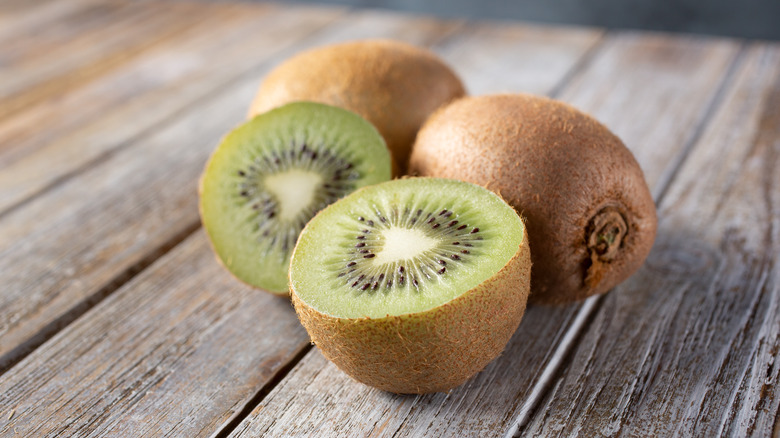Don't Eat These Foods If You're Allergic To Latex
A latex allergy occurs when the body's immune system instigates an attack when coming in contact with natural rubber latex. The substance that causes this reaction is derived from the sap of the Hevea brasiliensis tree (via Cleveland Clinic). Latex can be found in various products, including rubber gloves, balloons, and some condoms. Fortunately, the chances of developing a latex allergy are rare, occurring in less than 1% of Americans.
The severity of an allergic response to latex can vary, according to Cleveland Clinic. Some may experience more mild symptoms such as rashes, a runny nose, or sneezing. Other reactions can be life-threatening, including anaphylaxis. While many healthcare facilities have implemented the use of latex-free gloves, those that haven't may be putting individuals at an increased risk for developing a latex allergy from ongoing and consistent exposure.
But medical products aren't the only items that can prompt this allergic response. As it turns out, certain foods can also stimulate a latex allergy. How can this be so?
Latex cross-reactive foods and the body's response
According to the Allergy & Asthma Network, up to 50% of people with latex allergies also experience reactions to certain vegetables and fruits that the body interprets as latex. Why does this occur? Certain foods, also known as latex cross-reactive foods, are composed of proteins structured similarly to those found in latex. When coming in contact with these foods, the body can respond the same as it would with natural latex.
Such food items can prompt mild to severe allergic reactions, according to the Allergy & Asthma Network. Foods with low cross-reactivity include coconut, grapes, cucumber, wheat, shellfish, peanuts, and chickpeas. Foods with moderate cross-reactivity include apples, potatoes, celery, carrots, and tomatoes. Those with the highest cross-reactivity include kiwi, avocado, chestnuts, and bananas. It's recommended that those who are allergic to latex avoid these foods. If you suspect you may have developed an allergy to latex, consult a physician to get tested.

